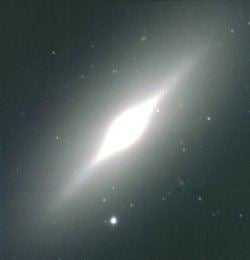Right ascension 10 05 14.0 Redshift 663 ± 4 km/s Apparent size (V) 7′.2 × 2′.5 Constellation Sextans | Declination −7° 43′ 07″ Type S0 Magnitude 9.9 Apparent magnitude (V) 9.9 | |
 | ||
Distance 31.6 ± 1.3 Mly (9.7 ± 0.4 Mpc) Similar NGC 2775, NGC 4697, NGC 3195, NGC 5005, NGC 4559 | ||
Ngc 3115 in 60 seconds standard definition
NGC 3115 (also called the Spindle Galaxy or Caldwell 53) is a field lenticular (S0) galaxy in the constellation Sextans. The galaxy was discovered by William Herschel on February 22, 1787. At about 32 million light-years away from us it is several times bigger than the Milky Way. It is a lenticular (S0) galaxy because it contains a disk and a central bulge of stars, but without a detectable spiral pattern. NGC 3115 is seen almost exactly edge-on, but was nevertheless mis-classified as elliptical. There is some speculation that NGC 3115, in its youth, was a quasar.
Contents
- Ngc 3115 in 60 seconds standard definition
- Ngc 3115 in 60 seconds high definition
- Star formation
- Black hole
- References
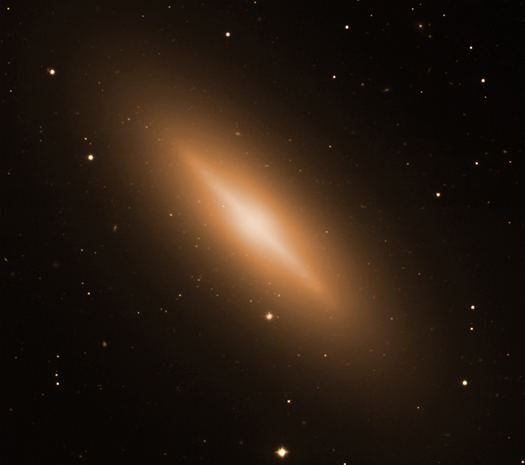
Ngc 3115 in 60 seconds high definition
Star formation
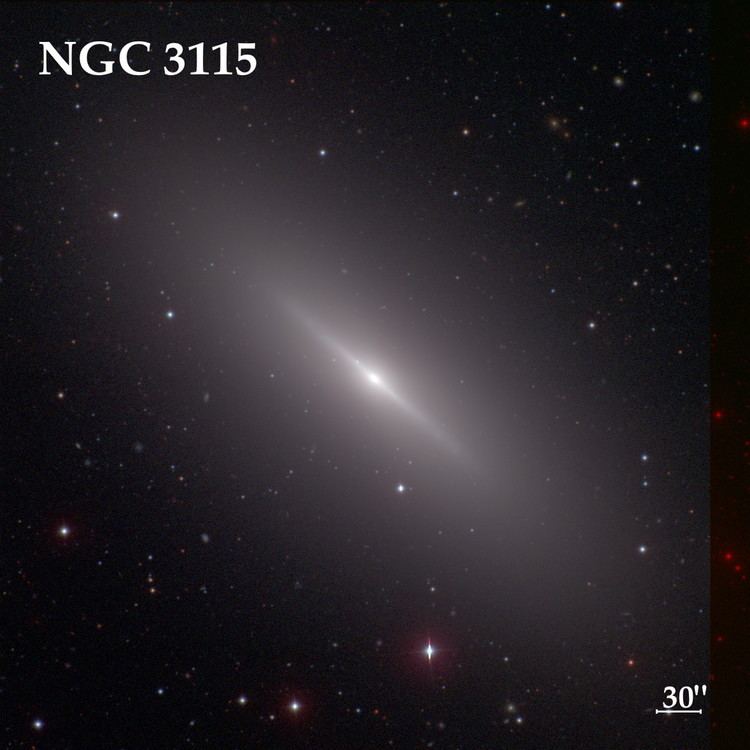
NGC 3115 has consumed most of the gas of its youthful accretion disk. It has very little gas and dust left that would trigger new star formation. The vast majority of its component stars are very old.
Black hole
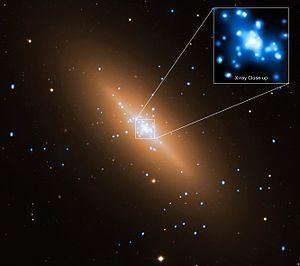
In 1992 John Kormendy of the University of Hawaii and Douglas Richstone of the University of Michigan announced what was observed to be a supermassive black hole in the galaxy. Based on orbital velocities of the stars in its core, the central black hole has mass measured to be approximately one billion solar masses (M☉). The galaxy appears to have mostly old stars and little or no activity. The growth of its black hole has also stopped.
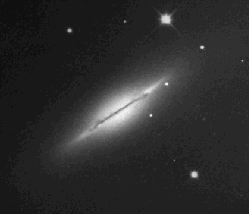
In 2011, NASA's Chandra X-ray Observatory examined the black hole at the center of the large galaxy. A flow of hot gas toward the supermassive black hole has been imaged, making this the first time clear evidence for such a flow has been observed in any black hole. As gas flows toward the black hole, it becomes hotter and brighter. The researchers found the rise in gas temperature begins at about 700 light years from the black hole, giving the location of the Bondi radius. This suggests that the black hole in the center of NGC 3115 has a mass of about two billion M☉, supporting previous results from optical observations. This would make NGC 3115 the nearest billion-solar-mass black hole to Earth.
